Integrating Google Analytics with Your Customer Data Platform (CDP)
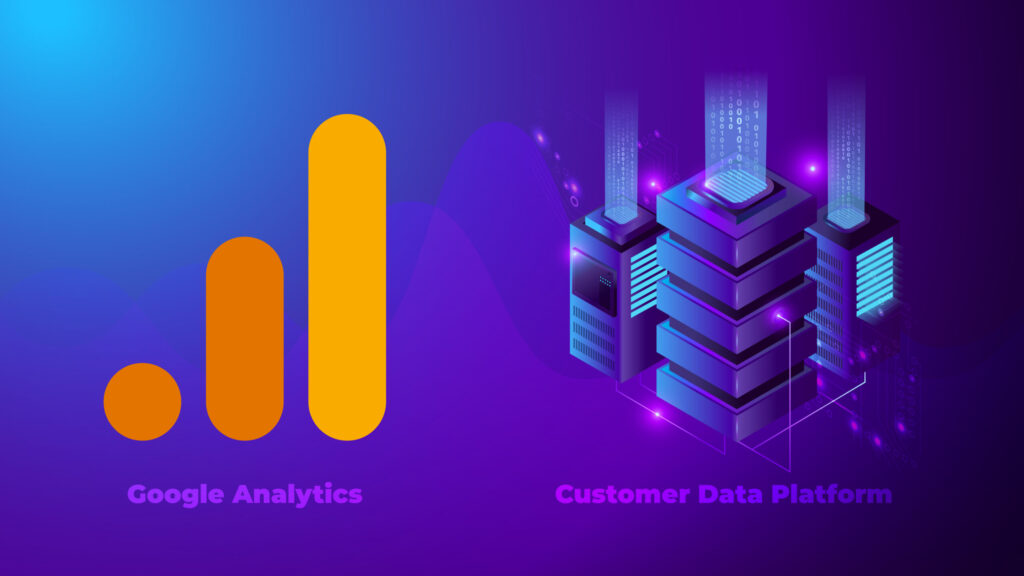
In this post, we’ll explain how you can and should integrate information from Google Analytics and access rich customer analytics from your Customer Data Platform (CDP). What are the benefits of GA4? The new Google Analytics 4 (GA4) is an improved tool that helps businesses understand their website and customer data better. GA4 brings advanced features such as built in predictive analytics such churn detection and purchase propensity among others. In addition, it offers a much more comprehensive approach to tracking and analyzing user data while reducing the reliance on cookie-based tracking. With GA4, businesses can delve deeper into user behavior, track multiple touchpoints across devices and channels, and gain a more holistic understanding of their customers. Do you need a CDP if you have GA4? While the new Google Analytics brings some exciting capabilities to the table, GA4 and a CDP are both serve different purposes. GA4 is a tool that tracks and analyzes data about how people interact with a website. It provides valuable information such as the number of visitors, their demographics, the pages they visit, and the actions they take on the site. This aggregated data helps businesses make informed trend-based decisions about marketing strategies, journey and website optimization, and customer engagement approaches. On the other hand, a Customer Data Platform (CDP) brings together customer information from different sources, one of them being GA4, to create a complete picture of an individual customer behavior. In other words, CDP helps you analyze a known customer, not just aggregate information. For that purpose, it allows for targeted and personalized sales and marketing approaches by combining data from various touchpoints, including website interactions, CRM systems, email marketing platforms, transactional systems and more. For example, imagine a clothing store that uses GA4 to track website visits and a CDP to store information about customers’ purchase and returns history. By doing integration of Google analytics (GA4) data with customer data platform (CDP), the store can see which website visitors later became customers, which other channels influenced it, and what products they bought. This helps the store understand which marketing strategies are working best and tailor their website content and promotions accordingly. As another example, let’s say a retailer integrates GA4 data with a CDP. They can then see which items are frequently viewed on their website and which ones are actually being purchased. With this information, they can optimize their marketing efforts by promoting popular items, tailoring their website content to match customer interests, and creating targeted email campaigns. By doing google analytics integration with customer data platform (CDP), businesses can centralize their customer data and gain a unified view of their audience. While GA4 does provide an option to integrate the data with Big Query for more advanced analytics, using a CDP helps businesses see a much bigger picture of their customers’ actions and preferences. What to do about Historical Data from Universal Analytics (GA3) Universal Analytics is the Google Analytics system that is being retired in July 2023 (in 2024 for GA360 customers). It is different from GA because it is based on sessions while GA4 is based on events. However, historical information can be valuable trend information that you do not want to lose. A typical advice is that you must maintain a separate dashboard for this historical data. However, Ignitho has developed a UA(GA3) to GA4 migration solution accelerator that does heavy lifting for you. It successfully maps information from UA to GA4. The biggest benefit is that you can have a unified dashboard instead of having 2 different reporting and analysis systems, especially for businesses who migrated late to GA4. Read more about how we map Universal Analytics to GA4 and sign up for a demo. Three Primary benefits of Using a CDP for GA4 Data It is recommended to integrate Google analytics (GA4) with a customer data platform(CDP) so that businesses can get a holistic view of their customers’ interactions across various touchpoints. It helps identify high-value customers, uncover behavioral patterns, and personalize marketing strategies to deliver relevant and engaging experiences. We should also be looking at the following as we think about the roadmap for our Customer Data Platform. Extensibility of AI models: Many off-the-shelf CDPs are very digital marketing heavy. They are great at processing clickstreams and email behavior, but they lack extensibility. Enterprises must look at the Customer Data Platforms that can easily handle and deploy additional use cases that can provide additional insights – e.g., the effect of high conversions during a time of day to final purchases and also returns. Infusing AI into BI Dashboards: As enterprises prioritize the use of AI, they are faced with several issues related to data quality and fragmentation. As a result, a significant amount of effort is spent in creating basic business dashboards that provide insights into the business and customer behavior. Using a CDP may be the right step to leapfrog this complexity and start designing for the future of how data will be used. By doing so, the traditional BI dashboards can be easily provided with insights from AI models thus enhancing business decision making. Last Mile Adoption of AI: While AI modeling is now very mature with the availability of data science tools and talent, the overall enterprise architecture is still lagging when it comes to integrating the insights with business applications. A CDP allows for AI insights to be available in real-time for integration with both customer and internal touchpoints. Check out Ignitho’s Customer Data Platform (CDP) accelerator built on the Domo platform. It has prebuilt AI models that make deployment of an enterprise grade CDP possible in as little as 2 weeks. It also makes it straightforward to realize the three benefits we listed above. Conclusion Integrating GA4 data with a CDP offers businesses a powerful way to gain valuable insights into customer behavior and improve marketing strategies. With GA4 providing detailed website analytics and a CDP consolidating customer data from various touchpoints, businesses can unlock a wealth
Transformative Role of AI in Custom Software Development
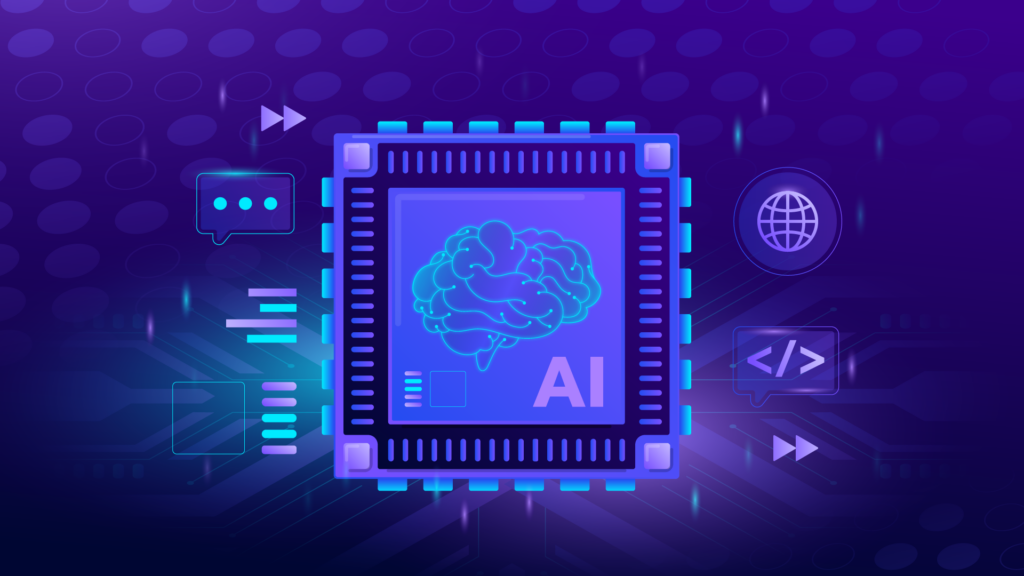
Welcome to the world of AI in custom software development. In this blog post, we will get into the impact of AI on custom software development in the enterprise. The emergence of artificial intelligence promises to revolutionize how we create applications and the larger business technology ecosystems. While AI brings the benefits of automated code generation and improved code quality, it is important to understand that there is still a critical place for human expertise in defining the application structure and overall enterprise tech architecture. Streamlining the Development Workflow First, let’s explore how AI can enhance the development process. This will: Create significant savings in mundane software development tasks. Empower developers to be more productive. It is common in every application development scenario where developers spend a significant amount of their time writing repetitive lines of code that perform similar tasks. We often call this software code as boilerplate code. These tasks could involve tasks like authentication, data validation, input sanitization, or even generating code for common functionalities such as calling APIs and so on. These tasks, although necessary, can be time-consuming and monotonous, preventing developers from dedicating their efforts to more critical aspects of the development process. Even today, accelerators like Intelligent Quality Accelerator (IQA), Intelligent Data Accelerator (IDA) and also shortcuts exist to generate all this automatically for developers. However, with the advent of AI-driven tools and frameworks, this scenario can be enhanced much further. The code generation is now context aware instead of just being code that needs to be customized. This will provide developers with a significant productivity boost. For example, let’s consider a developer who needs to implement a form validation feature in their application. Traditionally, they would have to write multiple lines of code to validate each input field, check for data types, and ensure data integrity. With AI-powered code generation, developers can specify their requirements, and the AI tool can automatically generate the necessary code snippets, tailored to their specific needs. This automation not only saves time and effort but also minimizes the chances of introducing errors. Thus, by leveraging AI algorithms, developers can streamline their workflow, increase efficiency, and devote more time to higher-level design and problem-solving. Instead of being bogged down by repetitive coding tasks, they can focus on crafting innovative solutions, creating seamless user experiences, and tackling complex challenges. The Importance of Human Expertise While AI excels at code generation, it is important to acknowledge that the structure of an application goes beyond the lines of code. Human expertise plays a key role in defining the overall structure, ensuring that it aligns with the intended functionality, architecture, and user experience. Consider a scenario where an organization wants to develop an application that processes customer returns. The application needs to have modules for managing customer information, tracking interactions, looking up merchandise and vendor specific rules, and generating reports. AI can assist in generating the code for these individual smaller modules based on predefined patterns and best practices. However, it is the human experts who possess the domain knowledge and understanding of the business requirements to determine how these modules should be structured and interact with each other to deliver the desired functionality seamlessly. Software architects or senior developers collaborate with stakeholders to analyze the business processes and define the architectural blueprint of the application. They consider factors like scalability, performance, security, and integration with existing systems. By leveraging their expertise, they ensure that the application is robust, extensible, and aligned with the organization’s long-term objectives. Since developing a software application often involves integrating it within an existing tech ecosystem and aligning it with the organization’s overall technology architecture, human input plays a critical role. Let’s consider another scenario where an organization plans to build a new e-commerce platform. The enterprise tech architecture needs to consider aspects such as the selection of the platform software, desired plugins, external database systems, deployment strategies, and security measures. While AI can help implement detailed software functionality, it is still the human architects who possess the expertise to evaluate and select the most suitable architecture that aligns with the organization’s specific requirements and constraints. Better Talent Management With AI assisting with custom software development, the management of skills and talent within an enterprise can be significantly improved. As developers are relieved from the burden of mundane coding tasks, they can focus on working at a higher level. That enables them to better leverage their expertise to drive innovation and solve complex problems. Let’s consider an example of an enterprise team tasked with integrating a new e-commerce platform into an existing system. Traditionally, integrating a new e-commerce platform would involve writing custom code to handle various aspects such as product listing, shopping cart functionality, payment processing, and order management. This process would require developers to invest considerable time and effort in understanding the intricacies of the platform. They would have to learn specific APIs and would have to implement much of the necessary functionality from scratch. However, with the aid of AI in code generation, developers can automate a significant portion of this process. They can leverage AI-powered tools that provide pre-built code snippets tailored to the selected e-commerce platform. This allows developers to integrate the platform into the existing system much faster. Thus, the integration of AI in custom software development not only improves productivity and efficiency but also alleviates the pressure of talent management and hiring within enterprises. As AI automates the base-level coding tasks, the demand for volume diminishes. AI helps make skills more transferable across different projects and reduces the need for hiring a large number of developers solely focused on low-level coding tasks. With AI handling the foundational coding work, this shift allows organizations to prioritize hiring developers with expertise in areas like software architecture, system integration, data analysis, and user experience design. Additionally, the adoption of AI-powered tools and frameworks enables developers to explore new technologies more easily. They can adapt their existing skill sets to different projects and platforms, reducing
Rethinking Software Application Architecture with AI: Unlocking New Possibilities – Part 2
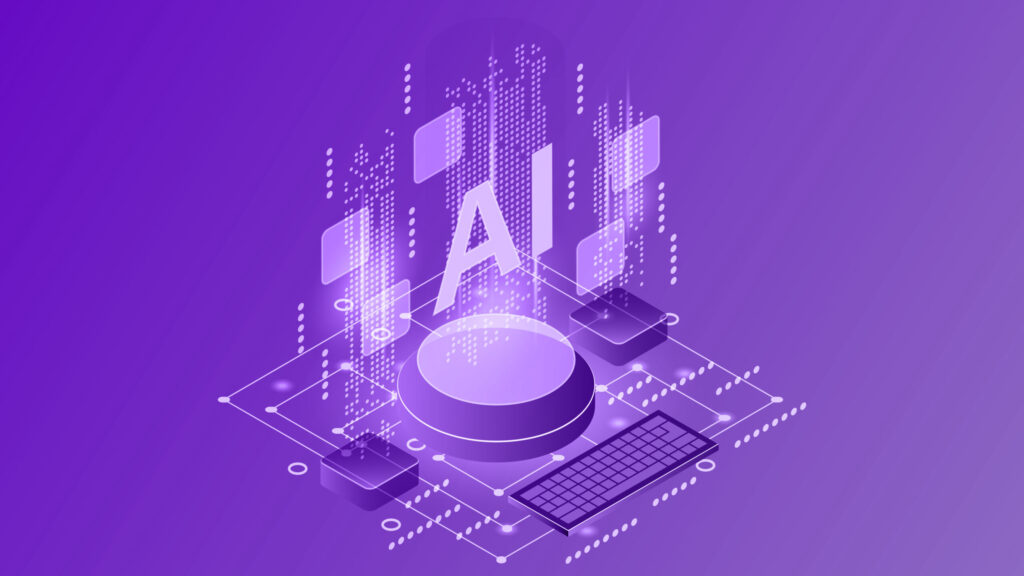
Welcome back! In our previous blog post, ” Rethinking Software Application Architecture with AI: Unlocking New Possibilities – Part 1”, we explored the transformative impact of AI on software application development. We discussed the need to rethink traditional architecture and design, focusing on leveraging AI-driven insights to improve user experience. If you missed that, be sure to check it out for a comprehensive understanding of the foundations of AI-enabled software application development. In this blog post, we will continue our exploration by delving into parts 3 and 4 of this series. To recap, the 4 parts are: Harnessing the Power of AI Models Transforming Data into Predictive Power Creating a Feedback Loop Evolution of Enterprise Architecture Guidelines and Governance We will dive into the vital aspects of feedback loop and data enrichment, as well as the evolution of enterprise architecture guidelines and governance practices. These elements play a crucial role in optimizing user experience, enhancing data-driven insights, and ensuring responsible AI practices. So, let’s continue our journey into the world of AI-enabled software application development! Creating a Feedback Loop In the age of AI, it’s essential to establish a feedback loop between the application and AI models. This feedback loop allows the application to continuously improve user experience and enrich the underlying data store on which the AI models operate. One way to implement the feedback loop is by capturing user interactions and behavior within the application. This data can be fed back into the AI models to refine their understanding of user preferences, patterns, and needs. For instance, an AI-powered customer portal can learn from user interactions to provide more accurate and contextually relevant experiences over time. By continuously analyzing and incorporating user interactions, the application can adapt its behavior and offer an improved experience. On the other hand, we can enhance the traditional data lakes by using the application data itself to enrich the underlying AI models. As users interact with the application, their data can be anonymized and aggregated to train and refine AI algorithms which can improve experiences across the enterprise. The feedback loop also enables the application to adapt to changing user needs and preferences. By monitoring user interactions and analyzing feedback, software developers can identify areas of improvement and prioritize feature enhancements. This iterative process ensures that the application remains relevant and aligns with user expectations over time. To facilitate the feedback loop, it is crucial to establish robust data governance practices. This involves ensuring data privacy, security, and compliance with regulatory standards. Users must have control over their data and be provided with transparent information about how their data is being utilized to enhance the application’s AI capabilities. By building trust and maintaining ethical data practices, software applications can foster a positive user experience and encourage user engagement. In the next section, we will explore how the evolution of enterprise architecture guidelines and governance is essential in the context of AI-enabled software application development. Evolution of Enterprise Architecture Guidelines and Governance AI-enabled software application development necessitates a rethinking of enterprise architecture guidelines and governance practices. Traditional approaches may not fully encompass the unique considerations and challenges posed by AI integration. To ensure successful implementation and maximize the benefits of AI, we must adapt the architecture frameworks and governance processes accordingly. Here are a few ways in which this can be accomplished: Modular Design and Microservices Architecture: AI integration often requires the utilization of specialized AI services or models. To enable seamless integration and scalability, organizations should adopt an approach that allows the AI insights to be available in real time to the applications that may need it. This is also the concept behind Ignitho’s Customer Data Platform architecture. Data Management and Infrastructure: AI relies heavily on data, and we must develop robust data management strategies to ensure data quality, security, and accessibility. This includes implementing data privacy and security measures and optimizing data infrastructure to handle the increased demands of AI processing and storage. Organizations should also consider the integration of data lakes, data warehouses, or other data management solutions that facilitate AI model training and data analysis. Ethical Considerations: With AI’s growing influence, ethical considerations become paramount. Organizations must establish guidelines that include ensuring fairness, transparency, and accountability in AI algorithms, identifying and mitigating bias in data sources, and respecting user privacy and consent. Ethical guidelines should be incorporated into the governance processes to uphold responsible AI practices. Performance and Scalability: AI integration can introduce new performance and scalability requirements. AI models often require significant computational resources and can place additional demands on the infrastructure. Scalability considerations should be incorporated into the architecture design to accommodate the potential growth of data volumes, user interactions, and AI workloads. Continuous Monitoring and Iterative Improvement: AI-enabled applications require continuous monitoring and iterative improvement to ensure their effectiveness and accuracy. The governance processes should review monitoring mechanisms to track this. Feedback loops, as discussed earlier, play a crucial role in capturing user interactions and improving AI models. Continuous improvement practices should be integrated into the governance processes to drive ongoing optimization and refinement. By evolving enterprise architecture guidelines and governance practices to embrace AI-enabled software application development, organizations can unlock the full potential of AI while mitigating risks and ensuring responsible use. Conclusion: Unleashing the Potential of AI-Enabled Applications AI-enabled software application development is a game-changer. By embracing AI, rethinking architecture, and evolving the governance processes, organizations can unlock significant potential. These key takeaways shape the path to success (we covered 1 and 2 in Part 1 of this blog): Embrace API-enabled applications to access AI models and insights. Harness AI-driven insights to provide predictive capabilities and empower users. Establish a feedback loop to continuously improve user experience and enrich data stores. Adapt architecture and governance to support modular design, robust data management, ethics, and scalability. AI-enabled software applications present immense possibilities. Organizations can create intelligent, user-centric applications that drive informed decision-making and operational efficiency. Contact us if you want to know more about our product engineering services.
Rethinking Software Application Architecture with AI: Unlocking New Possibilities – Part 1

In today’s rapidly evolving technological landscape, the integration of artificial intelligence (AI) is reshaping the way we develop and design software applications. Traditional approaches to software architecture and design are no longer sufficient to meet the growing demands of users and businesses. To harness the true potential of AI, we need to reimagine the very foundations of software application development. With our AI led digital engineering approach, that’s exactly how we are approaching software application development and engineering. In this blog post, we will explore how AI-enabled software application development opens up new horizons and necessitates a fresh perspective on architecture and design. We will delve into key considerations and highlight the transformative power of incorporating AI into software applications. Note: In this blog we are not talking about using AI to develop applications. That will be the topic of a separate blog post. This blog has 4 parts. Harnessing the Power of AI Models Transforming Data into Predictive Power Creating a Feedback Loop Evolution of Enterprise Architecture Guidelines and Governance We’ll cover parts 1 and 2 in this blog. Parts 3 and 4 will be covered next week. 1. Harnessing the Power of AI Models with APIs In the era of AI, software applications can tap into a vast array of pre-existing AI models to retrieve valuable insights and provide enhanced user experiences. This is made possible through APIs that allow seamless communication with AI models. Thus, a key tenet of software engineering going forward is the inclusion of this new approach of leveraging AI to enhance user experience. By embracing this, we can revolutionize how our software interacts with users and leverages AI capabilities. Whether it’s natural language processing, computer vision, recommendation systems, or predictive analytics, APIs provide a gateway to a multitude of AI capabilities. This integration allows applications to tap into the collective intelligence amassed by AI models, enhancing their ability to understand and engage with users. The benefits of API-enabled applications that can leverage AI are manifold. By integrating AI capabilities, applications can personalize user experiences, delivering tailored insights and recommendations. Consider an e-commerce application that leverages AI to understand customer preferences. By calling an API that analyzes historical data and user behavior patterns, the application can offer personalized product recommendations, thereby increasing customer satisfaction and driving sales. Applications also have the potential to dynamically adapt their behavior based on real-time AI insights. For example, a customer support application can utilize sentiment analysis APIs to gauge customer satisfaction levels and adjust its responses accordingly. By understanding the user’s sentiment, the application can respond with empathy, providing a more personalized and satisfactory customer experience. It follows that the data and AI strategy of the enterprise must evolve in tandem to enable this upgrade in how we define and deliver on the scope for software applications. In the next section, we will delve deeper into the concept of AI-driven insights and how they can transform the way we present data to users. 2. AI-Driven Insights: Transforming Data into Predictive Power With enterprises investing significantly in AI, it is no longer enough to present users with raw data. The true power of AI lies in its ability to derive valuable insights from data and provide predictive capabilities that go beyond basic numbers. By incorporating AI-driven insights into software applications, we can empower users with predictive power and enable them to make informed decisions. Traditionally, software applications have displayed historical data or real-time information to users. For instance, an analytics dashboard might show the number of defects in the past 7 days. However, with AI-driven insights, we can take it a step further. Instead of merely presenting past data, we can leverage AI models to provide predictions and forecasts based on historical patterns. This predictive capability allows users to anticipate potential issues, plan ahead, and take proactive measures to mitigate risks. AI-driven insights also enable software applications to provide context and actionable recommendations based on the data presented. For example, an inventory management application can utilize AI models to analyze current stock levels, market trends, and customer demand. By incorporating this analysis into the application, users can receive intelligent suggestions on optimal stock replenishment, pricing strategies, or product recommendations to maximize profitability. Furthermore, AI-driven insights can be instrumental in optimizing resource allocation and operational efficiency. For instance, in a logistics application, AI algorithms can analyze traffic patterns, weather conditions, and historical data to provide accurate delivery time estimations. By equipping users with this information, they can plan their operations more effectively, minimize delays, and enhance overall customer satisfaction. Next steps In this blog, we introduced the concept of AI-enabled software application development and emphasized the need to rethink traditional architecture and design. It is important to leverage AI models to modify behavior and engage users effectively. Additionally, applications must go beyond raw data to provide predictive capabilities. These insights empower users and enable informed decision-making. Moving forward, in the next blog post, we will delve into parts 3 and 4, which will focus on the feedback loop between applications and AI models for enhancing user experience and enriching the data store, as well as the evolution of enterprise architecture guidelines and governance in the context of AI-enabled software application development. Stay tuned for the next blog post to learn more about these crucial topics.
Role of AI in Unlocking the Full Potential of Customer Data Platform
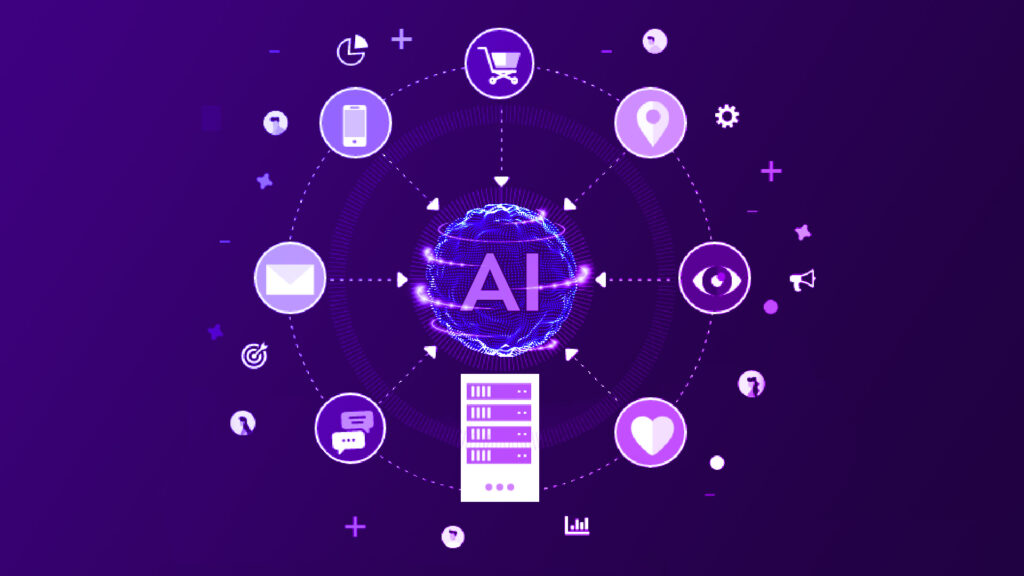
Customer Data Platforms (CDPs) have become integral to modern businesses, empowering them to collect, analyze, and utilize customer data effectively. However, the integration of artificial intelligence (AI) has emerged as a game-changer to fully unlock the potential of CDPs. By leveraging AI, we can extract invaluable insights from vast amounts of customer data to enable personalized marketing strategies and improve customer experiences. AI is also integral to Ignitho’s CDP accelerator that enables you to deploy a CDP with prebuilt AI models and full API access in as little as 2 weeks. In this blog, we explore the role of AI in unlocking the full potential of CDPs. By leveraging AI, we can extract invaluable insights from vast amounts of customer data to enable personalized marketing strategies and improve customer experiences. Enhancing Customer Segmentation (CDP) with AI Customer segmentation has emerged as a core capability of CDPs. It is crucial for businesses to tailor their marketing efforts and deliver personalized experiences. By integrating AI in customer data platforms (CDP), businesses can take dynamic customer segmentation to the next level. AI algorithms can process and analyze massive datasets, identifying patterns and correlations that might be missed by manual analysis alone. This allows for more accurate and granular customer segmentation, resulting in targeted marketing campaigns and improved conversion rates. As a result, AI-powered customer segmentation enables businesses to go beyond traditional demographic and psychographic factors. By analyzing behavioral data, such as browsing history, purchase patterns, and social media interactions, AI can uncover hidden insights about customer preferences and intent. This deeper understanding of customers facilitates the creation of hyper-personalized marketing strategies that resonate with individual preferences, boosting customer engagement and loyalty. Ignitho’s CDP accelerator is customized for different sectors such as media agencies, media publishers, and retailers. It uses Domo connectors to quickly connect with a wide variety of technology systems, pulling the right data into the CDP to enable this segmentation. The data blueprint is pre-defined and enables rapid initial implementation. Predictive Analytics for Anticipating Customer Needs: Traditionally, businesses have relied on historical data to make informed decisions. With AI integrated into CDPs, predictive analytics enhances this dramatically. AI can identify trends, patterns, and anomalies within customer data, enabling businesses to anticipate customer needs and behavior. Some common use cases that come to mind are to predict future customer actions, such as churn, purchase likelihood, and product preferences. These predictions empower businesses to proactively engage with customers, offer personalized recommendations, and address concerns before they escalate. For instance, retailers can leverage AI-powered predictive analytics (CDP for retail) to recommend relevant products to customers leading to higher conversion rates and customer satisfaction. Note: Ignitho’s CDP accelerator addresses this problem of last mile adoption of AI insights by connecting the models using APIs into the required business systems – whether homegrown or packaged. So, clients can focus on utilizing AI rather than trying to figure out ML ops (machine learning model training, deployment etc.) There are several other use cases for predictive analytics for both marketing as well as customer service. We can optimize marketing campaigns by determining the most effective channels, timing, and messaging. AI can also look at past transactions and service data to recommend actions that customer service reps should take to help customers, and even prevent incoming service requests through proactive and automated action. For example, we implemented an AI model for a client to quickly project the impact of a price increase on the likelihood of customer churn. not a novel use case, the proposed architecture to quickly connect the models via APIs in real time to the customer engagement systems was a game changer. This data-driven approach enhances overall business performance and maximizes ROI. Sentiment Analysis for Enhanced Customer Insights Understanding customer sentiment and feedback is crucial for businesses to improve their products, services, and overall customer experience. AI helps unlock valuable insights from customer data through sentiment analysis. AI-powered sentiment analysis algorithms can analyze customer feedback in a variety of ways – the way they click through, what content and offers they respond to, their reviews, social media interactions, and customer service interactions. This massive data processing capability allows us to gauge customer sentiment accurately. By automatically categorizing sentiments, businesses can execute tests at scale, and monetize previously untapped areas for improvement. With AI-driven sentiment analysis, businesses can also augment both conversion and retention metrics. By identifying negative sentiments or issues promptly, companies can take immediate action to address concerns, rectify problems, and prevent potential customer churn. This proactive approach showcases a commitment to customer satisfaction and helps businesses retain loyal customers. Additionally, AI-powered sentiment analysis can uncover sentiment trends across different customer segments, geographic locations, or demographic groups. By understanding the sentiment variations among different customer groups, businesses can create real time personalized campaigns that resonate with each segment, driving higher engagement and conversion rates. Conclusion: The role of AI in Customer Data Platforms (CDP) is that of a game changer. AI unlocks the full potential of customer data by providing advanced customer segmentation, predictive analytics, and sentiment analysis capabilities. As we embark on our data lake and CDP journey, we should keep AI front and center in program planning discussions. Even if you feel that you need to tackle data strategy first, you should consider how the architecture with AI would look like before you make IT investment decisions. Take a look at our data platform (CDP) accelerator to see how AI can be included in traditional Business Intelligence / dashboarding programs, and how it will provide an API gateway for last mile adoption. Also know more about ai based cdp in retail industry.
Best Practices for a Successful Customer Data Platform (CDP)
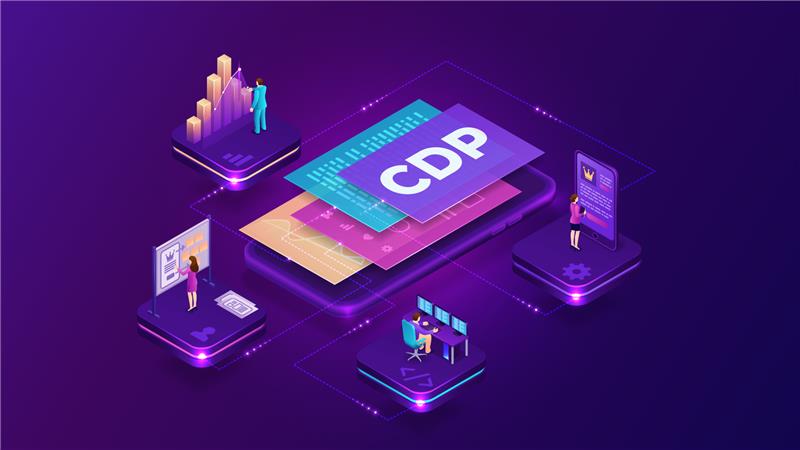
Understanding the Role of a Customer Data Platform (CDP) A Customer Data Platform (CDP) project is not simply a data aggregation and dashboarding program. It is also not a different kind of DMP where the only difference is that data is aggregated and anonymized instead of being segmented by customer. In this blog, we will bring out some key characteristics of a CDP and will outline 3 best practices of CDP that will help you define and successfully implement a robust CDP for your enterprise. In today’s digital age, businesses are collecting an enormous amount of customer data from various sources, including website analytics, social media, customer interactions, and more. However, the challenge is to make sense of all this data and derive meaningful insights that can be used to improve customer experiences and drive business growth. This is where a Customer Data Platform (CDP) comes in – it’s a tool that can help businesses unify and organize their customer data and provide actionable insights. Do You Need a CDP? The first step in deploying a CDP is to decide if you need one. Some of the primary criteria for this are: Your AI models and business intelligence are siloed and don’t talk to each other. E.g. You cannot easily perform what-if analytics based on AI outputs. Your AI insights are not easily operationalized or used by your business applications Your AI insights are not integrated in real time with your business applications These needs are more than just requiring a consolidated database for customer segmentation and installing reporting and dashboarding tools. So, in short, if you have data silos, disconnected customer experiences, and a lack of actionable insights integrated in real time, then a CDP is right for you. Otherwise, you should proceed with deploying a nice reporting and dashboarding tool. Key Best Practices of CDP: Identify the Key AI and Business Intelligence Use Cases A CDP program should be action led. In contrast, a data lake program is data led where the priority is to feed it everything we can get. A CDP on the other hand must start with the actionable outcomes we want to drive. We should start by defining the business objectives and the specific insights we want to derive from the customer data. This will help us identify the key use cases that the intended CDP should support. For example, in a retail or digital business, we may want to understand our customers’ purchasing behavior, preferences, and motivations. This could involve analyzing data from various sources, such as purchase history, browsing behavior, demographic data, and social media interactions. In addition, we may want to uplift promotion effectiveness, improve cross sell rates, reduce cart abandonments, etc. By identifying the key use cases, we can ensure that the CDP provides the necessary functionality and features to support our business objectives. Defining the use cases first also ensures that we have a clear blueprint for our data needs. It makes it easier to then run a discovery program across the enterprise to see how best those data needs can be met. Engaging Stakeholders: Collaboration and Buy-In It is natural that defining the use cases needs active engagement of various stakeholders to secure buy-in and collaboration. That’s because deploying a CDP is a business initiative that requires collaboration and buy-in from stakeholders across business units from marketing, sales, customer service, technology, and others. It’s essential to engage stakeholders early on in the process to ensure that the benefits case for the CDP is sound. Even though the initial scope may be small, we are likely not going to build multiple CDPs over time. So, by involving multiple stakeholders and following a design thinking approach, we can ensure that the planned CDP is scalable enough to meet future needs as can be reasonably defined. This will also help build a sense of ownership and accountability for the success of the CDP deployment. Identify Data Sources and Existing Tech Landscape Existing tech landscape and data sources are crucial to consider. For example, we may need to analyze the maturity of the data lake, if any, to determine if it can be used as the base for the data in the CDP, or whether multiple data integrations will be needed. Additionally, it’s important to consider how to migrate from or leverage existing visualization tools. This may involve integrating the CDP with existing BI tools or migrating to a new platform that complements the CDP’s capabilities. Since AI is an important driver of the CDP, the technology landscape for AI and machine learning operations should also be evaluated. Traditionally, enterprises have used isolated tools to create and train their AI models, and then run into challenges with making the insights available in real time. That’s because hosting of the AI models and making them available in real time needs a separate platform. In addition, integration of the insights with the reporting tools for active what-if analysis must be considered. Thus, in our opinion, if possible, the target CDP technology should be evaluated for simplifying this AI operational model as well. Doing this well will have a big impact on how well AI is integrated with various business applications. It’s important at this time to recognize the critical role that IT plays in deploying a CDP. Multiple IT teams will be responsible for ensuring the security, scalability, and reliability of the CDP infrastructure. They will also be instrumental in defining the data fabric necessary for the CDP. Therefore, it’s important to collaborate closely to ensure that the CDP meets their enterprise architecture strategy and is compatible with the existing IT infrastructure as much as possible. Integrated AI Capabilities: Enhancing Insights and Real-Time Integration A common mistake is to think of a CDP just as a highly segmented data store for customer data. That results in decisions that prevent the AI, BI, and last mile integration of insights to come together well. Therefore, using a traditional enterprise BI tool on top of a segmented datastore
What is a Customer Data Platform (CDP)? CDP Explained
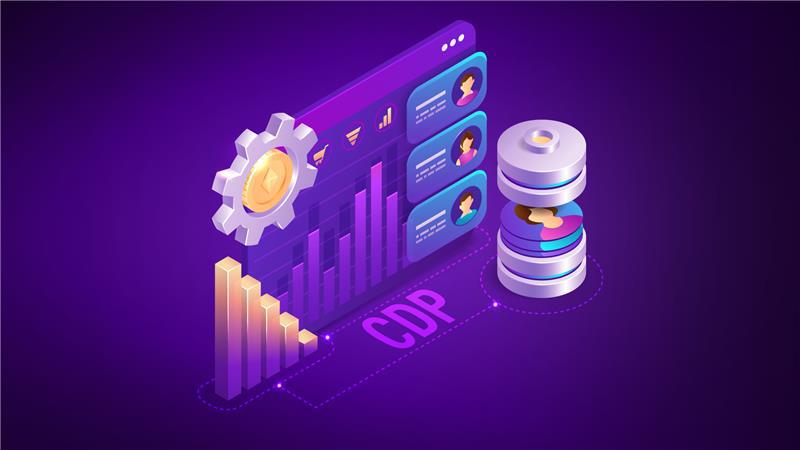
Customer Data Platform (CDP) has become an important way to deliver analytics and insights to enhance customer experiences and monetization. In Salesforce’s latest “State of Marketing” report, 78% of high performers said they use a CDP, versus 58% of underperformers. In this blog, we’ll explain what a CDP is, how is it different from a data lake and an enterprise data warehouse, and what its different features and components are. We’ll also outline how you can get started with this journey, and how you can minimize your deployment times to maximize your ROI. What is a Customer Data Platform? A Customer Data Platform (CDP) is a software that enables you to collect customer data from a variety of sources, such as websites, mobile apps, social media, and customer support and commerce interactions. It then creates a complete profile of each customer. This profile includes details such as demographics, behavior, purchase history, and preferences. This data is then used to generate insights that then lead to personalized marketing campaigns, better customer experiences, and optimized sales strategies. In our view, a CDP has 5 distinct modules: Visualization of data: these are the traditional dashboards that allow users to slice and dice the data in various ways. AI models: The models in the CDP generate advanced level of predictive insights about scenarios such as customer behavior, content monetization, churn analysis, promotions uplift etc. What-if scenario analysis: This advanced visualization module is based on the outputs of the AI models. It allows you to answer questions and get clear insights for decision making. For example, “what will be the impact of this promotion for customer segment A”. Data repository: It’s common for a CDP to have its own data repository. However, for organizations with a highly mature data warehouse, this layer could be implemented in a federated fashion thus avoiding the need to permanently store data into the CDP itself. There are pros and cons to each approach. API integration: Since integration of insights is the biggest challenge facing organizations today, the significance of this layer cannot be overemphasized. This layer allows all the enterprise applications and content management systems to use the AI insights. How is a Customer Data Platform (CDP) different from a data lake? We had briefly covered the topic CDP vs Data Lake in our blog titled “AI Led Customer Data Platform (CDP) for Retail”. According to us, a CDP has an express purpose of leveraging insights to make decisions. It is designed to collect and unify customer data from various sources to create a unified customer profile. This profile and other data are then used by AI models to improve customer experiences, personalize marketing campaigns, and optimize sales strategies. On the other hand, a data lake is a repository that is the target destination for all types of data, including structured, semi-structured, and unstructured data, from different sources. While we can use a data lake for customer profile based advanced analytics and business intelligence, it is not built for that specific purpose. A data lake is intended to be very flexible and accessible for various data analytics purposes. So, while a CDP is created with specific analytical models in mind, a data lake is more generic and universal. It often serves to be the single source of data for the rest of the enterprise. How to get started with your Customer Data Platform (CDP) journey? Once you are ready for a CDP, you have a choice of implementing a proprietary CDP platform or you can choose the technology you prefer and use a customer data platform (CDP) accelerator. A CDP accelerator not only reduces your time to market to deploy a full CDP but also provides you with a few benefits: It has predefined AI models which you can simply test / train on your data and launch after making any adjustments. The What-if scenarios are hence also predefined The data schema that enables the models is also well-defined so it accelerates your data integration efforts Does not lock you into long term technology choices Thus, a CDP accelerator offers a flexible middle ground between enterprise build vs buy dilemma. As is usually the case, there are pros and cons of each approach, and a proper analysis should be carried out before making a decision. Read about our CDP accelerator for media here. Does a CDP address only marketing use cases? Contrary to popular trend, a CDP is not just for marketing or sales use cases. Since it is a hub of all data for a customer, use cases that support service and operations can also be implemented. For example, for retail companies, we could think of warranty analytics, service analytics, and so on. In addition, store personalization and demand analytics may also be a helpful use case. Hence, customer analytics may be a better term to describe a CDP’s purpose that marketing and sales analytics. Conclusion As the power of AI becomes more accessible, digital first organizations must embrace the concept of the CDP to enhance the effectiveness of customer analytics. The following are some key takeaways: Integration of AI insights into business applications using APIs must remain top of mind to maximize the business impact. A balanced coupling between the enterprise data lake and a CDP must be created. Data does not always have to be duplicated, and even if duplicated there are ways to provide the updates back to the source systems. See our blog on Domo connectors for that. Choice of platform ranges from custom to a licensed product. A CDP accelerator can offer a good balance. Make a choice after considering your requirements and tech landscape. Also read more blogs on CDP for Retail Industry and CDP for media.
How to choose the right Agile methodology for project development in a frugal way
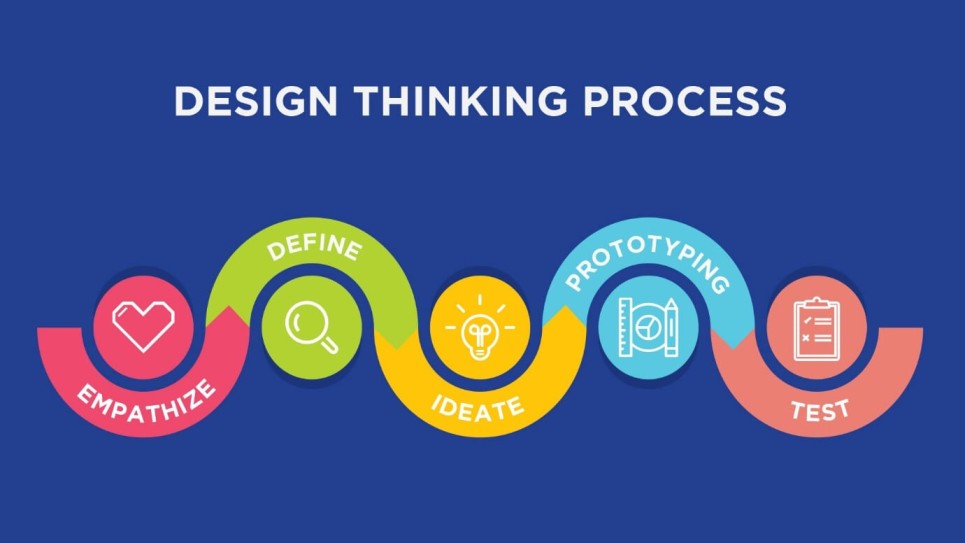
Earlier, the role of technology was limited to be a mere business enabler. But the evolving business scenario now visions technology as the major business transformation element. This puts enterprises under tremendous pressure to build disruptive products with capabilities to transform the entire business world. The role of an efficient project management model for software development is crucial here to bring the right technology solutions at the right time. Traditional project development models such as Waterfall are too rigid and depend explicitly on documentation. In such models, the customers get a glimpse of their long-wished product/application only towards the end of the delivery cycle. Through continuous communication and improvements in project development cycle irrespective of the diverse working conditions, enterprises need to ensure that they get things done with the application development within the stipulated time without compromising on quality. Without an efficient delivery method, the software development team often comes under pressure to release the product on time. According to the survey done by Tech Beacon, almost 51% of the companies worldwide are leaning towards agile while a 16% has already adopted pure agile practices. While this statistic is in favour of agile for application development, there are some major challenges faced by both the service providers and customers while practising agile. Communication gap When the team is geographically distributed, communication gap is a common problem. In such a distributed agile development model, the transition of information from one team to another can create confusion and lose the essence of the context. An outcome-based solutions model with team members present at client locations can enable direct client interactions and prompt response between both the sides. Time zone challenges Another challenge that the client faces in a distributed agile development environment is the diverse time zones. With teams working in different time zones, it is often difficult to find out common work hours where every team is present at the same time. Through an outcome-based solutions model, the customers can stay relaxed and get prompt assistance during emergencies. Moreover, in such cases, the client stays updated about the progress of projects and iterations become easy. Cultural differences In a distributed agile team, the difference in work ethics, commitment, holidays and culture creates a gap between the development team and the customer. In situations like these, a panel of experts including ex-CIO’s and industry experts can be the helping aid to provide customers with valuable insights on current market trends and solutions to close any cultural gaps. Scope Creep Scope Creep is another issue faced by countless customers associated with agile teams working on software development projects out of multiple locations. Here, the missing pillar is a scrum master at offshore defining and estimating the tasks along with onsite representatives communicating every requirement from clients. A closer look at these challenges suggests the scope of a properly architected and innovative agile model to resolve these issues. Through a carefully devised agile strategy, it becomes quite easy for both the client and development sides to interact on a frequent basis and overcome the obstacles.
Conceptual Architecture of Customer Data Platform (CDP)

A customer data platform (CDP) is vital for businesses today. It brings together many dimensions of customer information so that a 360-degree understanding of a customer can be created and enriched with information from multiple sources. The final aim is to generate insights and AI models that can be used to drive better customer experiences, commerce (purchases, cross-sell) and operational efficiencies. However, enterprises often face the following two challenges: CDP programs often tend to become too complex leading to delays in returning value to the business. The systematically deployment of AI insights into operations as part of closed loop analytics remains a challenge for the industry. These challenges are a motivation for this post. The identification and implementation of a CDP does not have to be complex. In this post I wanted to present a bird’s eye view of some of the primary data and technical architectural components that business & technology leaders must think of as they embark on CDP programs – whether licensing a platform from a leading vendor or customizing an open-source product. Conceptual Architecture of Customer Data Platform – Explained Below A CDP can be thought of in terms of the following key functional blocks that span the overall data management lifecycle. It is helpful to think in terms of a functional architecture because it aligns the CDP more closely to its purpose. Let’s go bottoms up and build it up to enable an easier understanding of the multiple layers of Customer Data Platform Architecture. Level 0: The core data repository This is the core Customer 360 vision for a CDP. Ideally the development of this level should be aligned with the benefits that we wish to drive through AI and better insights aka personalization, audience analysis, cross-sell, better conversions, lower stock outs, decrease locked inventory, etc. This layer is often virtualized and consists of many functional blocks representing key data workstreams that will help us deliver the business objectives. For example, online clickstream data, transactions, purchase behavior etc. are often all part of this layer. To enable this comprehensive repository, the integration architecture must support both real time as well as batch ingestion mechanisms. At this level we also have the challenges of customer identity resolution and master data management. As with any data management program, creation of this stage means external and internal source management, multiple levels of staging and cleaning layers, data quality, data masking, and so on. Because of the inherent complexity of data management, this level can often overwhelm and dominate the scope of a CDP program. We must strategically define the (never ending) scope of Level 0 so that the business ROI can be generated in a timely manner. In other words, this layer must be incremental business value led. Level 1: Insights Generation Engine This architectural component is generally not considered as part of the core data repository but is critical to a CDP delivering the promised outcomes. Typically, the analytical use cases here are defined with a view to the desired business outcomes. For example, one of the most common insights to be generated is about customer segmentation. Any subsequent models must keep the segmentation in mind. The failure to keep segmentation front and center leads to sub-optimal outcomes. For example, we could be running a campaign based on incorrect segmentation thus leading to product cannibalization in the market, or we could be trying to fix an operational supply issue without clear insights on whether the issues disproportionately affect any specific customer segment. This level is also closely aligned with traditional business intelligence – the visualization of data according to the many slices and dimensions possible. Level 2: Program and Campaign Management This functional component of the CDP provides a structure to the campaigns and ensures that we do not create conflicts or overlaps between campaigns. This conceptual block is where most of the business facing programs are managed and executed. For example, we could be executing a cross-sell campaign and a product adoption campaign simultaneously, or premium brands could be running campaigns to the audience of a lower priced brand. So, this component, although not purely a technical one, serves as a key governance tool. This level also flows directly into the management reporting on campaign performance and attribution. We also often define the Level 0 or Customer 360 requirements at this level. That allows for the Level 0 layer to be built in an incremental and Agile fashion, with a view towards the business value expected. Level 3: AI Operationalization This functional block is the mechanics by which generated insights from Level 1 are integrated with either operational systems or customer engagement systems. Failure to consider this component of the CDP holistically is one of the primary reasons that AI programs often fail to be systematically utilized in production operations systems.; For example, as the insights on cross-sell targeting are generated and a campaign is kicked off, the extent to which this is automated and integrated with the eCommerce systems defines the success or failure of most CDP and AI programs. After all, this is the moment of truth. Insights implementation will depend on a variety of factors such as available budgets, technology constraints, or operational conflicts. However, partial versus full implementation must be analyzed and planned consciously. Technologically insights generated from AI are consumed and utilized via various means such as an API gateway. This level also serves to build in the reverse data feedback loops to feed into level 0. When this cycle is optimized, then the closed loop analytics mission is properly met. Level 4: Management Reporting The final component in the conceptual architecture of customer data platform (CDP) is the generation of insights for decision making and control. This is where we generate metrics on sales performance, product adoption, etc. This level also has the traditional components of exploratory data analysis and hypothesis so that new ideas can be generated. We cannot control and improve what we cannot measure. So, thinking of
Customer Data Platform (CDP) for Media: Three AI Use Cases
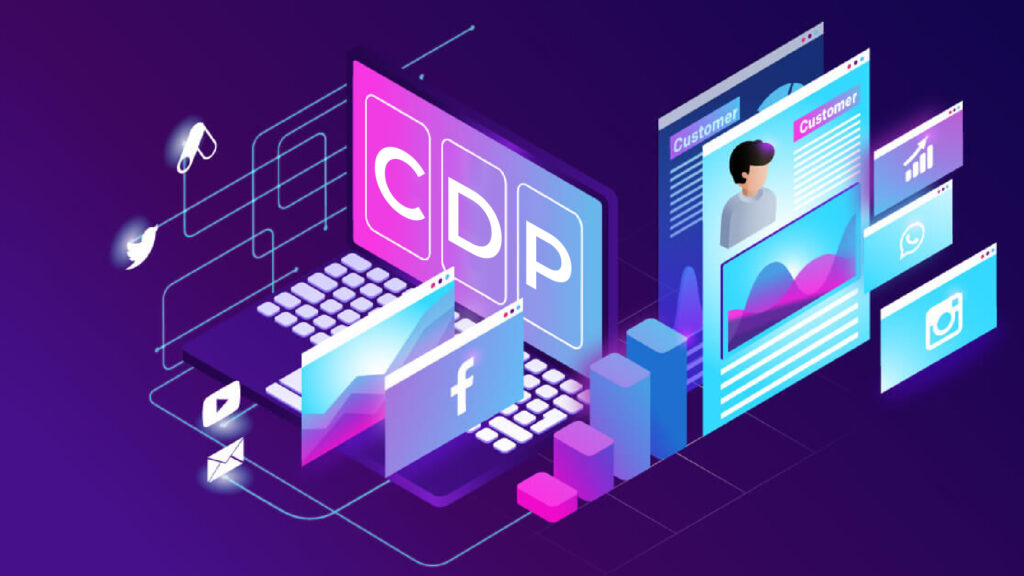
As media and entertainment becomes ubiquitous in our lives, there are multiple priorities unfolding for media companies and brands. They need to be innovating constantly to understand our preferences and behavior to make sure that their content is geared to reach the right people on the right channels and media. AI and big data are important drivers of this capability. In this blog we’ll outline three AI use cases in CDP that media companies should be implementing to stay ahead in digital customer engagement. To deliver the AI and analytics charter, a Customer Data Platform (CDP) becomes extremely important. So, in this blog we will explore the interlinkages between the two. What is a Customer Data Platform (CDP)? A Customer Data Platform (CDP) allows you to unify and manage customer data from multiple sources in a central location. Media companies can benefit greatly from the use of a CDP due to the large amount of first, second-, and third-party data that they receive. For example, clickstream data coming in from their web properties is an important source, and so is the advertising data that is sourced from the networks. Although it is a common deployment scenario, a CDP does not have to integrate directly with a lot of data sources. Instead, mature enterprises are consolidating their enterprise data into a data lake repository such as Snowflake, and then pulling data from there to do AI modeling, create dashboards, and perform what-if analytics in a platform such as Domo. CDPs can be implemented in different ways because depending on the data maturity of the enterprise, not all data is always in pristine condition in a globally centralized data lake. Why is AI important in a CDP Platform? One of the many reasons a CDP is implemented is because it focuses business and technology efforts on a narrow set of AI use cases. This ensures faster time to market. Today, traditional dashboards that provide a view into the past are not enough to understand the cause-and-effect analysis of the many variables in play. Decision making can be made better. The ability to implement AI has the potential to dramatically improve the overall effectiveness of your business intelligence initiatives because it can predict and prescribe. The ability to deploy a CDP quickly and deliver results is much enhanced if the CDP platform is capable of data ingestion, AI modeling, dashboarding, what-If analysis, and API integration of insights. Ignitho’s CDP accelerator has these components with the added advantage that it lets you maintain your investments in various technologies such as Snowflake, Domo, Microsoft, GCP, and AWS. Key Customer Data Platform (CDP) Use Cases for Media Personalization & Promotion Uplift In a crowded digital marketplace, it is important to personalize content recommendations and advertising for each user. By unifying data from different sources, such as website interactions, social media, multiple channels, and email statistics, a CDP helps you gain a holistic view of the audience segments and also at an individual level. You can now provide real time and personalized recommendations based on interests, preferences, and behavior. The insights from AI models in the CDP can be used directly in the customer experience systems to improve performance. Or they can be used for advanced what-if scenario analysis such as gauging the effect of an upcoming promotion being planned. Subscriber Retention & Content Affinity This is an important content monetization use case as publishers begin to experiment with introducing new content formats and packages with different prices. This can be done, for example, by analyzing changes in engagement levels or patterns. By identifying these customers early, we can take targeted actions such as offering personalized discounts or promotions. Using the API layer of the CDP, the insights from the AI models can be integrated right into the content management and promotion systems, thus improving overall responsiveness. Price Sensitivity If we understand customer behaviors and preferences, then we can identify potential churn risks early on. We can take targeted actions proactively and increase engagement. In addition to the ongoing A/B tests in engagement and adoption, a CDP can help analyze who is likely to churn given a price increase or change. These insights can be valuable, as we can then take proactive action to prevent this scenario from occurring and improve the retention considerably. It is often more difficult to reengage customers than to maintain or enhance their engagement. Which Supporting Capabilities to Examine? Implementing a robust Customer Data Platform (CDP) requires a combination of technological, operational, and strategic capabilities. Capturing Zero Party Data Zero party data is information that is intentionally shared by customers of their own accord. It is valuable because it can be used to deliver highly personalized experiences and campaigns. So digital capabilities that prompt customers for their input, feedback, and wish-lists are important to implement. Enterprise Data Fabric An enterprise data fabric aims to create and provide a unified view of data across an organization’s various applications and data sources. It helps break down data silos. As you look to implement a CDP and/or a data lake, creating a well-designed data fabric is important to maximize the ROI from an enterprise insights program. Identity Resolution CDPs rely on resolving and unifying customer identities across different channels and devices. This requires the ability to match and merge customer records based on common identifiers and data attributes. Data quality issues and inadequate analytics can often result from not being able to resolve identities efficiently. Privacy and Security A CDP should have robust privacy and security capabilities to protect customer data and ensure compliance with relevant regulations, such as GDPR and CCPA. This includes capabilities such as data encryption, access controls, and audit logging. Integration and interoperability A CDP should be able to integrate with other marketing and technology platforms, such as marketing automation tools, CRM systems, and data management platforms, to enable seamless data exchange and campaign orchestration. Summary An AI-powered CDP (Customer Data Platform) can help media companies monetize the vast amounts of data